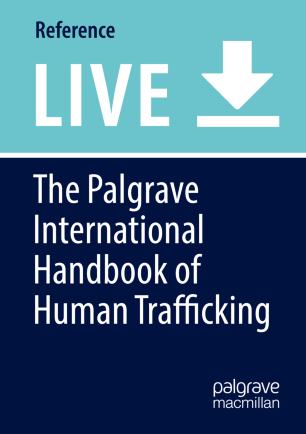In 2018 while I attended grad school a focus of my research was into different literary tactics used by writers during the original abolition movement in England.
I’m happy to share that some of that work will soon be available in The Palgrave International Handbook of Human Trafficking. I wrote an article entitled, “Aesthetic Whistle-Blowers: The Importance and Limitations of Art and Media in Addressing Human Trafficking.”
The article zeroes in on a few writers who model important tactics writers today can employ when they apply their creative abilities to fight against injustice, and in this case, human trafficking.
If you’re reading this blog post, you may know that some of my writing life has been spent addressing justice issues through the play and film She Has A Name and also through other publications like Disappointed by Hope, Hope in Action and 30 Days of Prayer for the Voiceless.
I hope “Aesthetic Whistle-blowers” gives you some helpful insight and also gives a partial glimpse into my thoughts surrounding writing about justice issues.

Here’s the abstract, taken from the books website:
Abstract
As academic research focused on human trafficking garners more public attention, art-focused responses to human trafficking are on the rise. Film, theatre, public art installments, and popular television shows bring human trafficking to light in both positive and negative ways. Works of literature in the past such as Hannah More’s antislavery poetry in the late eighteenth century and Aleksandr Solzhenitsyn’s writing in the twentieth century disrupted the status quo. Their work influenced multiple levels of society, including government policy and practice, in regard to the transatlantic slave trade as well as the horrors of enslavement and forced labor in the Gulag system in the USSR, respectively. Can contemporary works of art do for human trafficking what More’s and Solzhenitsyn’s work did in their day? First, this chapter will examine how writers can influence public perception by alerting readers to the complexity and nature of human trafficking to serve as “aesthetic whistle-blowers” and will highlight literary works that have sounded the alarm. Secondly, it will explore some of the pitfalls or ways that literature can be unhelpful to antislavery efforts. This chapter therefore considers how world literature positions itself to alert audiences to the realities of trafficking in order to help build social and political will necessary to address human trafficking.
Keywords
Aesthetics Literary forensics Art Human trafficking

